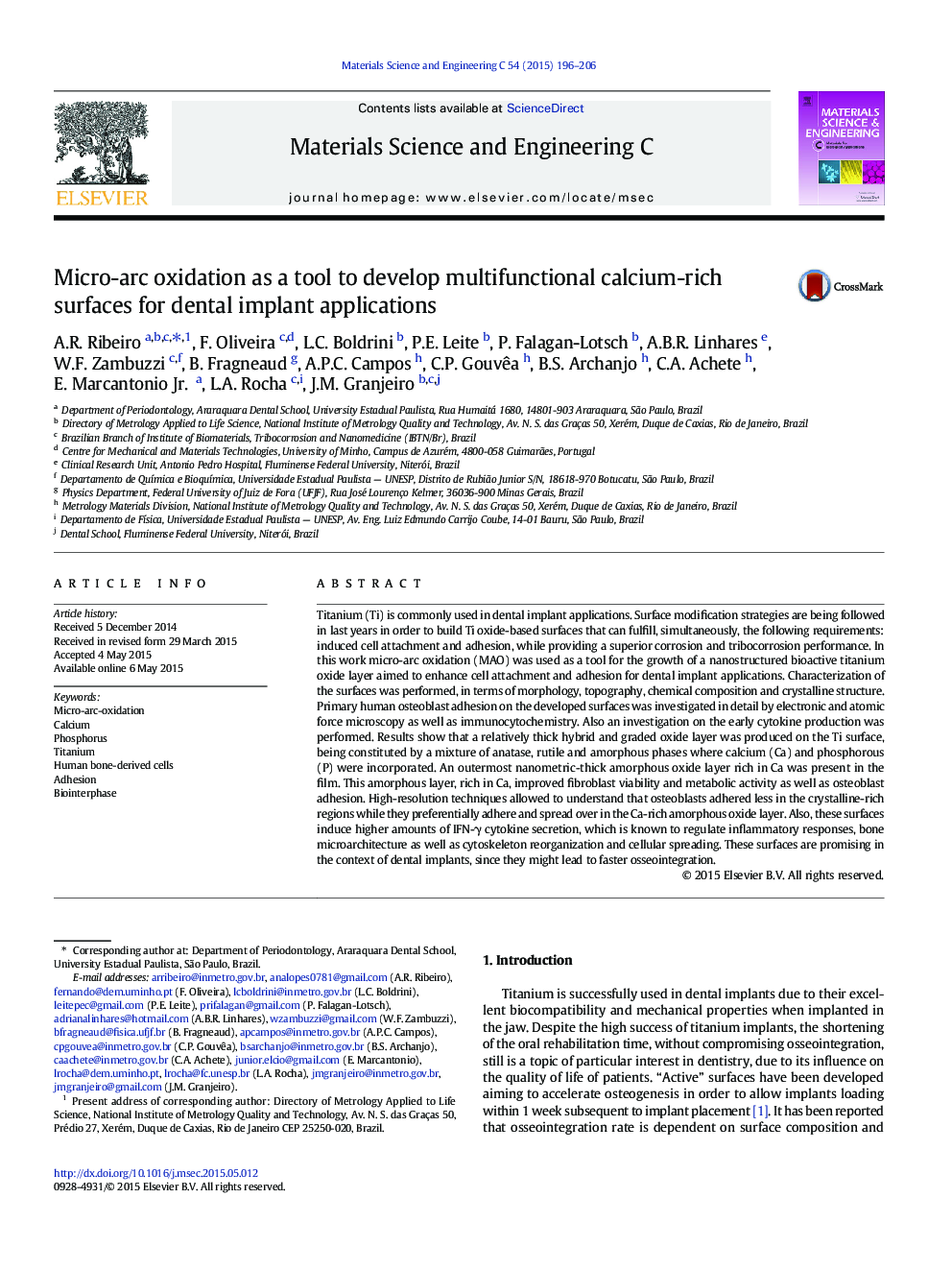| کد مقاله | کد نشریه | سال انتشار | مقاله انگلیسی | نسخه تمام متن |
|---|---|---|---|---|
| 1428138 | 1509167 | 2015 | 11 صفحه PDF | دانلود رایگان |
• A nanometric-structured calcium-rich amorphous layer with improved bioactivity was produced on titanium surfaces.
• This amorphous Ca-rich layer enhanced fibroblast viability and osteoblast adhesion.
• These surfaces induced the secretion of cytokines by osteoblasts, able to minimize inflammatory response.
• The developed surfaces might lead to faster osseointegration, reducing rehabilitation time after insertion in patients.
Titanium (Ti) is commonly used in dental implant applications. Surface modification strategies are being followed in last years in order to build Ti oxide-based surfaces that can fulfill, simultaneously, the following requirements: induced cell attachment and adhesion, while providing a superior corrosion and tribocorrosion performance. In this work micro-arc oxidation (MAO) was used as a tool for the growth of a nanostructured bioactive titanium oxide layer aimed to enhance cell attachment and adhesion for dental implant applications. Characterization of the surfaces was performed, in terms of morphology, topography, chemical composition and crystalline structure. Primary human osteoblast adhesion on the developed surfaces was investigated in detail by electronic and atomic force microscopy as well as immunocytochemistry. Also an investigation on the early cytokine production was performed. Results show that a relatively thick hybrid and graded oxide layer was produced on the Ti surface, being constituted by a mixture of anatase, rutile and amorphous phases where calcium (Ca) and phosphorous (P) were incorporated. An outermost nanometric-thick amorphous oxide layer rich in Ca was present in the film. This amorphous layer, rich in Ca, improved fibroblast viability and metabolic activity as well as osteoblast adhesion. High-resolution techniques allowed to understand that osteoblasts adhered less in the crystalline-rich regions while they preferentially adhere and spread over in the Ca-rich amorphous oxide layer. Also, these surfaces induce higher amounts of IFN-γ cytokine secretion, which is known to regulate inflammatory responses, bone microarchitecture as well as cytoskeleton reorganization and cellular spreading. These surfaces are promising in the context of dental implants, since they might lead to faster osseointegration.
Figure optionsDownload as PowerPoint slide
Journal: Materials Science and Engineering: C - Volume 54, 1 September 2015, Pages 196–206
